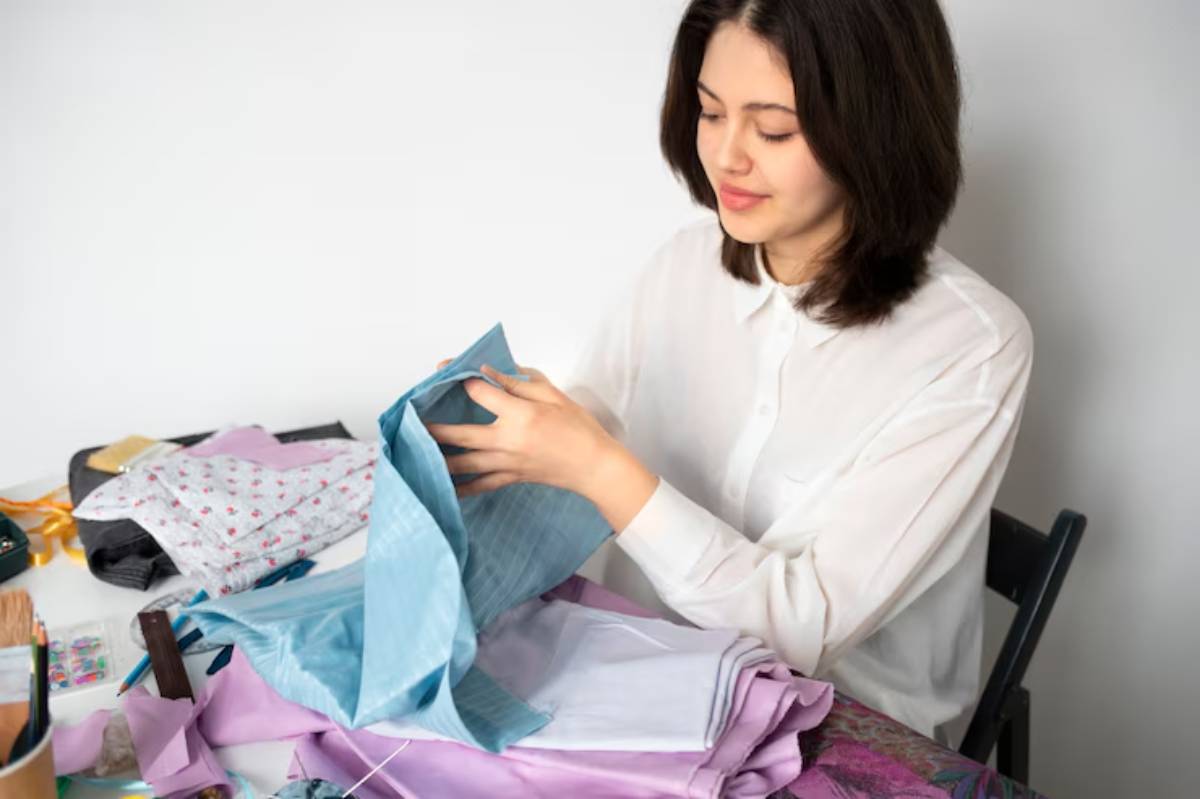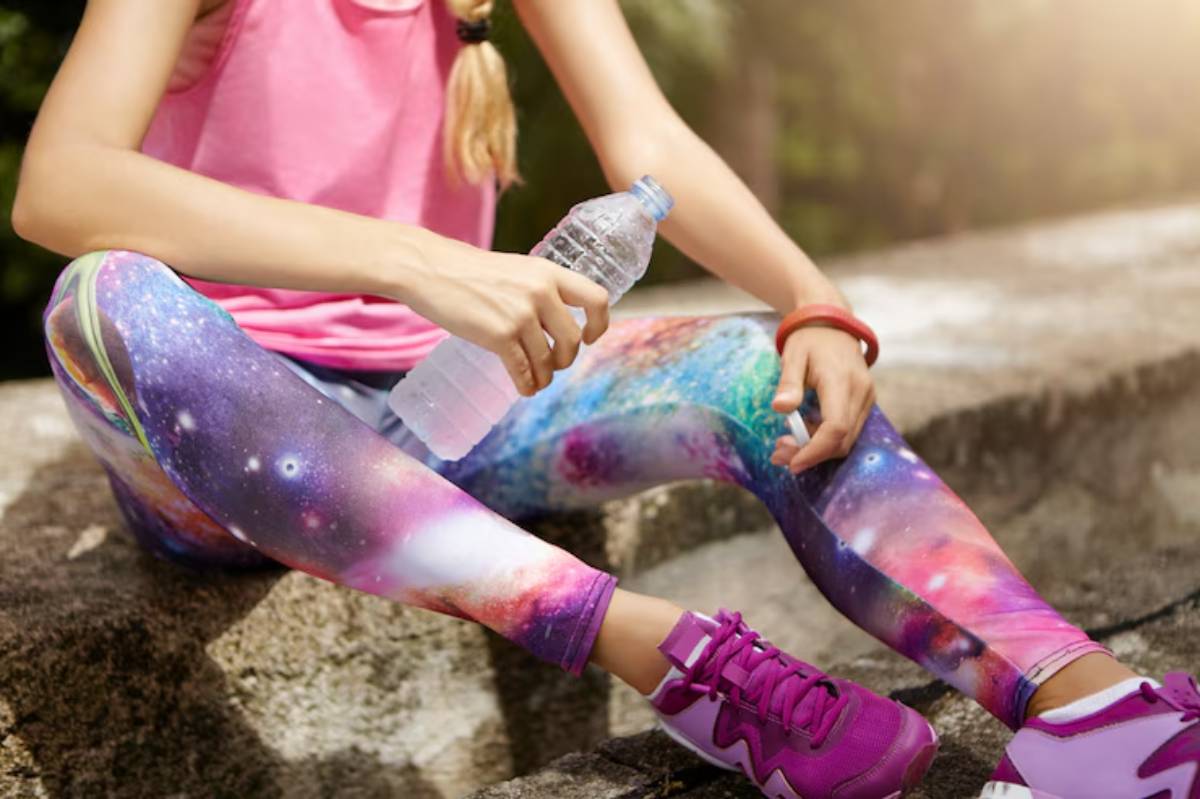
Recycled Fabrics in Athleisure Explained
The New Look of Eco-Conscious Fitness
Athleisure isn’t just about how you move — it’s about how your clothes are made. Whether you’re smashing a spin session, heading to a brunch in trainers, or stretching into a morning yoga flow, chances are your go-to gear includes leggings, tops, and trainers made from synthetic fabrics. But what if your favourite gym wear could also help the planet?
That’s where recycled fabrics in athleisure come into play. Brands are now turning post-consumer plastic into sleek, high-performance gear — think recycled polyester leggings, breathable tops, and eco gym wear that rivals any conventional kit.
This guide will explain recycled fabrics, how they perform, and which brands are leading the way in making sustainable athleisure the new norm. It will also give you practical tips on how to choose and care for recycled activewear. Ready to green your workout wardrobe? Let’s dive in.
What Are Recycled Fabrics?

Recycled vs. Virgin Materials
Most traditional gym clothes are made from virgin polyester or nylon, which are petroleum-based and require significant water and energy to produce.
Recycled fabrics, on the other hand, are made from:
- Post-consumer plastic bottles
- Fishing nets (e.g., ECONYL® nylon)
- Fabric waste from manufacturing floors
Instead of sending these materials to a landfill, they’re cleaned, melted down, and spun into new yarn. This process uses up to 50% less energy and produces 30–60% fewer emissions, depending on the material source (source: Textile Exchange).
The Most Common Recycled Athleisure Materials
- Recycled Polyester (rPET): Created mainly from used plastic bottles
- ECONYL® Regenerated Nylon: Made from marine and landfill waste
- Recycled Cotton: Often blended with synthetics to improve durability
These fabrics are often blended with elastane (for stretch) or other fibres to maintain the performance that athleisure demands.
Why Choose Sustainable Athleisure?

1. Reduced Environmental Impact
- Less waste in the landfill
- Fewer fossil fuels burned
- Lower water usage and pollution
A pair of recycled leggings can divert 25–30 plastic bottles from the oceans or landfills. Over time, these swaps significantly reduce fashion’s contribution to climate change.
2. High Performance, Low Guilt
Recycled doesn’t mean “second-best.”
Today’s recycled fabrics offer:
- Sweat-wicking technology
- 4-way stretch
- Shape retention
- Long-lasting colour
Whether you’re into HIIT or hot yoga, these leggings can keep up — while keeping plastic out of oceans.
3. Supporting a Circular Economy
By buying recycled gear, you’re backing a circular fashion system—one that reuses and regenerates materials rather than extracting them endlessly from nature.
Curious how recycled leggings stack up against other sustainable options? Have a look at our list of top eco-friendly leggings for daily wear for a broader perspective.
Best Recycled Polyester Leggings to Try

Here are some standout brands offering recycled polyester leggings that score high on sustainability, comfort, and design.
1. Girlfriend Collective – Compressive Leggings
Material: 79% recycled polyester from post-consumer bottles
Sustainability Perks:
- Recyclable through their ReGirlfriend programme
- OEKO-TEX certified dyes
- Ethical supply chain transparency
Why they’re great: Supportive and stylish, with an inclusive size range from XXS to 6XL.
2. TALA – SkinLuxe Leggings
Material: Up to 92% recycled polyamide
Sustainability Perks:
- Plastic-free packaging
- Ethically manufactured
- Affordable for a sustainable brand
Why they’re great: Sleek and sculpting with excellent recovery for workouts and errands alike.
3. PANGAIA – Activewear 2.0
Material: Bio-based nylon blends and recycled components
Sustainability Perks:
- Antibacterial peppermint oil treatment to reduce washing
- Life cycle emissions data transparency
- Innovative fabric science
Why they’re great: Tech meets sustainability in an understated, minimal aesthetic.
4. BAM Bamboo Clothing – Enduro Bamboo Leggings
Material: Bamboo viscose blend with recycled elastane
Sustainability Perks:
- FSC-certified bamboo
- Closed-loop water system
- Carbon footprint labelling
Why they’re great: Ultra-soft, great for lounging or light movement like Pilates.
Key Benefits of Eco Gym Wear
You’re not just making a fashion statement — you’re taking an ethical stance.
Here’s what makes eco gym wear worth the switch:
Comfort with Conscience
Recycled fabrics are breathable, flexible, and ideal for movement. And knowing you’re reducing waste? That’s a feel-good bonus.
Inclusive Innovation
Sustainable brands tend to be more inclusive, with expanded sizing, body-positive marketing, and even gender-neutral options.
Long-Term Durability
Many recycled fabric blends are designed to withstand multiple washes and workouts, meaning fewer replacements and better value over time.
What to Look for When Buying Recycled Activewear
1. Fabric Transparency
Check labels and websites.
Look for:
- % of recycled content (e.g., “made with 79% rPET”)
- Certifications like Global Recycled Standard (GRS) or OEKO-TEX
2. Ethical Practices
A truly sustainable brand considers people as well as the planet.
Look for:
- Fair wages
- Safe working environments
- Ethical sourcing of materials
3. Packaging and Shipping
Bonus points for brands that use plastic-free packaging, carbon-neutral shipping, or let you bundle orders to reduce emissions.
Are Recycled Fabrics the Perfect Solution?
The Honest Truth
While recycled fabrics are a huge improvement, they’re not a silver bullet.
Challenges include:
- Microplastic shedding: Synthetic fibres (even recycled ones) can release microfibres in the wash. Use a Guppyfriend bag to capture them.
- Energy-intensive processes: Recycling still requires electricity, heat, and water.
- End-of-life issues: Most recycled leggings aren’t biodegradable. Look for take-back schemes or recycling programmes.
That said, it’s still far more eco-conscious than buying virgin synthetics.
Want to dig deeper into where fast fashion gets it wrong in gym wear? Don’t miss our article on the truth about fast fashion in fitness wear.
How to Care for Recycled Polyester Leggings
To make your gear last (and limit its impact),
follow these tips:
- Wash Cold: Hot water breaks down fibres faster and uses more energy. Stick to 30°C.
- Air Dry: Tumble dryers damage stretch and use unnecessary electricity.
- Use a Microfibre Filter or Bag: Products like Guppyfriend or Cora Ball catch synthetic fibres before they enter the water system.
- Spot Clean Between Washes: Often, a quick wipe is all you need after a light workout.
The Future of Sustainable Athleisure
As technology improves and consumer demand increases,
we can expect:
- Wider use of closed-loop systems (where garments are recycled into new ones)
- Bio-based synthetics like algae and mushroom leather
- Increased brand accountability through blockchain traceability and transparency reports
The future of fitness wear is not just functional — it’s conscious, connected, and circular.
Conclusion: Stretch Sustainably, Wear Responsibly
Recycled fabrics in athleisure represent a smart intersection of style, function, and ethics. Whether you’re buying your first pair of recycled polyester leggings or switching your entire workout wardrobe to eco gym wear, every choice contributes to a cleaner, more sustainable future.
Sustainable athleisure isn’t about perfection — it’s about progress. One pair of leggings at a time, you’re helping reduce landfill waste, support ethical labour, and reshape the fitness fashion industry from the inside out.


